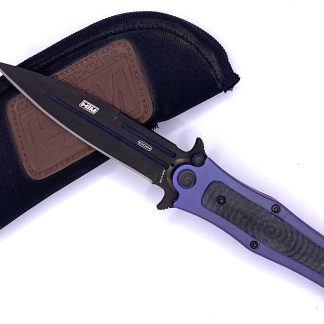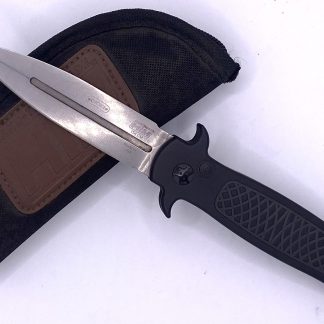Knife steel is a critical factor in determining the performance, durability, and overall quality of a knife. The choice of steel affects various aspects of a knife, including its sharpness, edge retention, corrosion resistance, toughness, and ease of sharpening. Here are some reasons why knife steel is important:
- Sharpness:
- The type of steel used in a knife influences how sharp it can get and how well it holds its edge. Some steels can be sharpened to a finer edge than others, providing better cutting performance.
- Edge Retention:
- Edge retention refers to how well a knife maintains its sharpness over time and use. High-quality knife steels are known for their ability to hold an edge for an extended period, reducing the frequency of sharpening.
- Corrosion Resistance:
- Different steels have varying levels of resistance to corrosion. This is particularly important for knives that may be exposed to moisture or harsh environments. Stainless steels are often chosen for their resistance to rust and corrosion.
- Toughness:
- Knife toughness is the ability of a blade to withstand impact and stress without breaking or chipping. Toughness is crucial in situations where a knife might experience heavy use or encounter hard materials.
- Ease of Sharpening:
- Some steels are easier to sharpen than others. The ease of sharpening is an essential consideration for users who prefer maintaining their knives with manual sharpening tools.
- Heat Treatment:
- The heat treatment process applied to the steel during manufacturing plays a significant role in its performance. Proper heat treatment enhances the steel’s hardness, toughness, and other properties, contributing to overall knife quality.
- Intended Use:
- The type of steel selected often depends on the intended use of the knife. For example, knives designed for heavy chopping may require a different steel than knives intended for precision slicing.
- Cost:
- High-quality knife steels often come at a higher cost. The budget and preferences of the user may influence the choice of steel, with some individuals prioritizing certain characteristics over others.
- Personal Preferences:
- Knife enthusiasts and professionals often develop preferences for specific steel types based on their experiences and the characteristics they value in a knife. Some may prioritize ease of sharpening, while others may prioritize edge retention, for example.
Popular knife steels include stainless steels like 440C, VG-10, and S30V, as well as high-carbon steels like 1095. Each steel type has its advantages and trade-offs, and the choice ultimately depends on the user’s preferences and the intended application of the knife.

